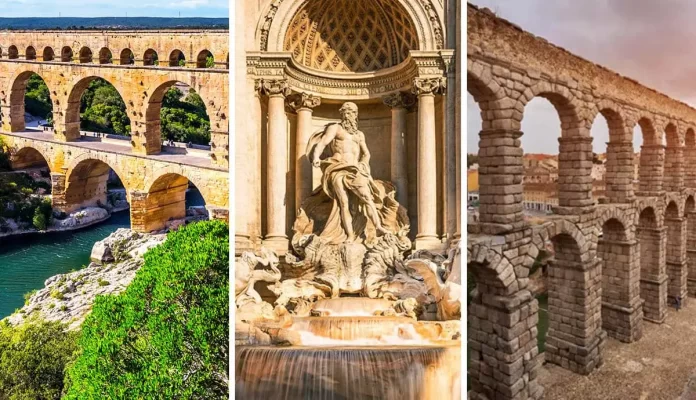From France’s Pont du Gard to the Segovia Aqueduct in Spain, these towering ancient Roman waterways have truly stood the test of time.
Aqueducts are some of the most remarkable examples of ancient Roman engineering. Used to carry water to key settlements of the sprawling Roman Empire, they required meticulous planning and vast construction projects unparalleled by other ancient civilisations.
Although the ancient Egyptians constructed aqueducts, it was under ancient Rome that the world witnessed the construction of its most sizable – and enduring – aqueducts.
These great waterways, carried by bridges, canals, tunnels and pipes, can still be seen across Europe, North Africa and the Middle East.
Here are 8 of the most impressive Roman aqueducts.
1. Pont du Gard Aqueduct, France
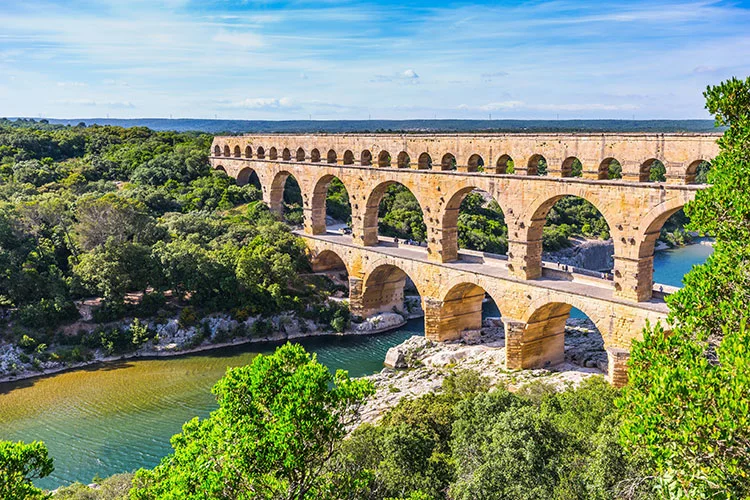
Pont du Gard is an iconic ancient Roman bridge and aqueduct located near Nimes in France. As the city’s population grew rapidly from the 1st century BC, exceeding 20,000, the need for water surpassed the available supplies of the Nemausus spring. From 40 AD, over 1,000 workers were engaged in building Pont du Gard, and it would stay in use until the 6th century.
Since then, Pont du Gard has undergone a series of restoration projects and is now a spectacular place to visit. In 1985 it was listed by UNESCO as a World Heritage Site. Today, guided tours of Pont du Gard take visitors right to the very heart of this iconic structure to see how such an engineering feat was achieved and how the aqueduct operated.
2. Tarragona Aqueduct, Spain
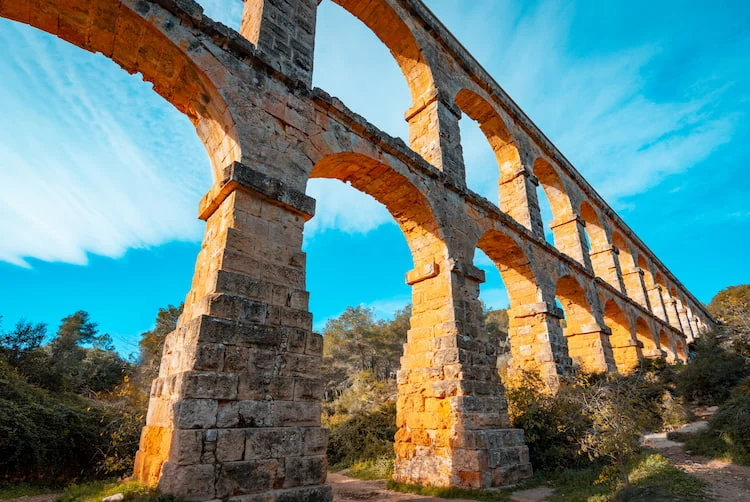
The stunning Tarragona Aqueduct (also known as the Les Ferreres Aqueduct), in Spain, is the last remaining section of the ancient aqueduct which served the Roman city of Tarraco. It is believed to have been built in the first century AD during the reign of Emperor Augustus. The original Roman aqueduct ran for over 25km and took water from the river Francoli all the way to the city of Tarraco.
Most of the aqueduct fell to ruin after the fall of the Roman Empire but the impressive surviving section, which spans a small valley about 4km to the north of modern Tarragona, was preserved and restored over the centuries. It’s a beautiful site to visit, nestling in the green valleys and picturesque hills of the Spanish countryside.
Read More
3. The Claudio Aqueduct, Italy

The Claudio Aqueduct or Acquedotto Claudio was an ancient Roman aqueduct, regarded as one of the four great aqueducts of Rome. It was completed under the reign of Emperor Claudius, in 52 AD, hence its name. The aqueduct ran from its mainsprings at the Caerulueus and Curtius predominantly underground for 41 miles. As the aqueduct neared Rome, it was lifted up onto the arches, flowing through the Porta Maggiore, part of the 3rd century Aurelian Walls.
Today, much of the Claudio Aqueduct is visible from railway lines and high windows, but to really appreciate its ancient splendour up close, travel to the Appia Antica Regional Park. From below you can see how the above-ground archways, built by more than 700 engineers of the imperial water service, maintained a continuous slope from the water’s source in the mountains to the gates of the city.
4. The Skopje Aqueduct, Macedonia
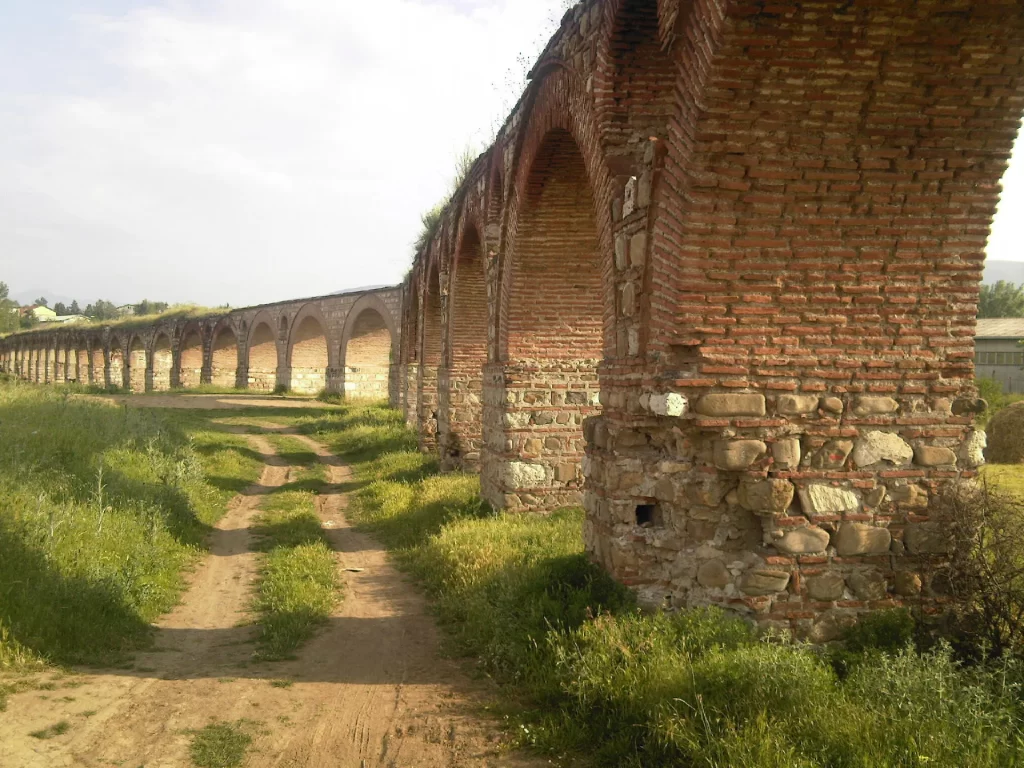
The Skopje Aqueduct is a well-preserved stone aqueduct located north of the Macedonian city of Skopje. Its origins are unclear. Over the years, three theories of its historical origins have been raised: the first dates the aqueduct back to 1st century Romans, the second to the Byzantine Empire under Justinian I and the third to the Ottoman Empire in the 16th century. The second theory is probably the most favoured.
Today, an impressive 390m of the aqueduct remains, its red-brick structure nestled amongst long grass and sprouting grass along its top. It’s not maintained by any public or private organisation, so continues to fall into ruins and looks somewhat neglected – though nonetheless beautiful.
5. The Los Milagros Aqueduct, Spain
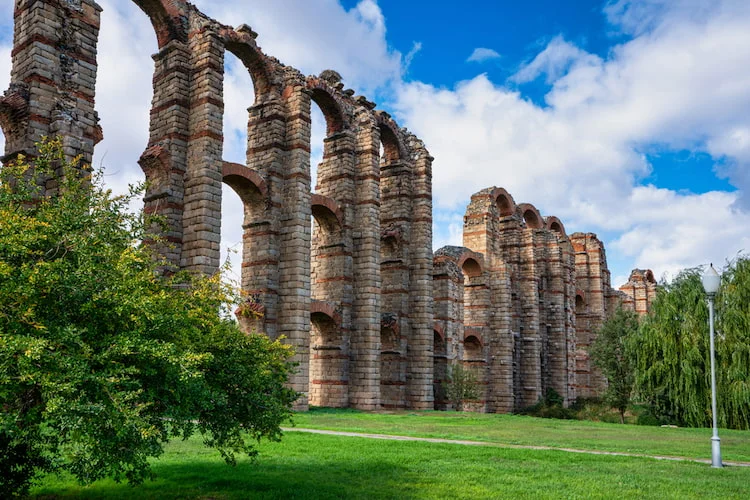
The Los Milagros Aqueduct is an incredibly well-preserved Roman aqueduct in Merida, Spain. It was part of a hydraulic system that brought waters from the Proserpina Dam, also known as the Albuera Reservoir. It is popularly known as ‘Los Milagros’ (‘The Miraculous One’) because of the admiration that its state of conservation brings about in locals and visitors, especially considering its age.
Los Milagros lives up to its popular name, as more than 800 metres of this aqueduct still stand today and some of its brick and granite support structures rise 27 metres above the ground. It is visible from afar and can be viewed from the roadside and surrounding fields.
6. Caesarea Aqueduct, Israel

The Caesarea Aqueduct is the picturesque, well-preserved ruin of the ancient Roman aqueduct which served the city of Caesarea, Israel. The majority of the great public buildings, infrastructure and monuments of Caesarea were built from around 22 BC onwards. As the city flourished, water had to be carried from Shuni, 12km northeast of the city.
One of the best-preserved stretches of the aqueduct is on Caesarea’s beach, offering gorgeous, extremely photographic views. The aqueduct is free to view at all times, but offers little in the way of information nearby, so it’s worth reading up in depth before you go if you’re interested.
7. The Zaghouan Aqueduct, Tunisia
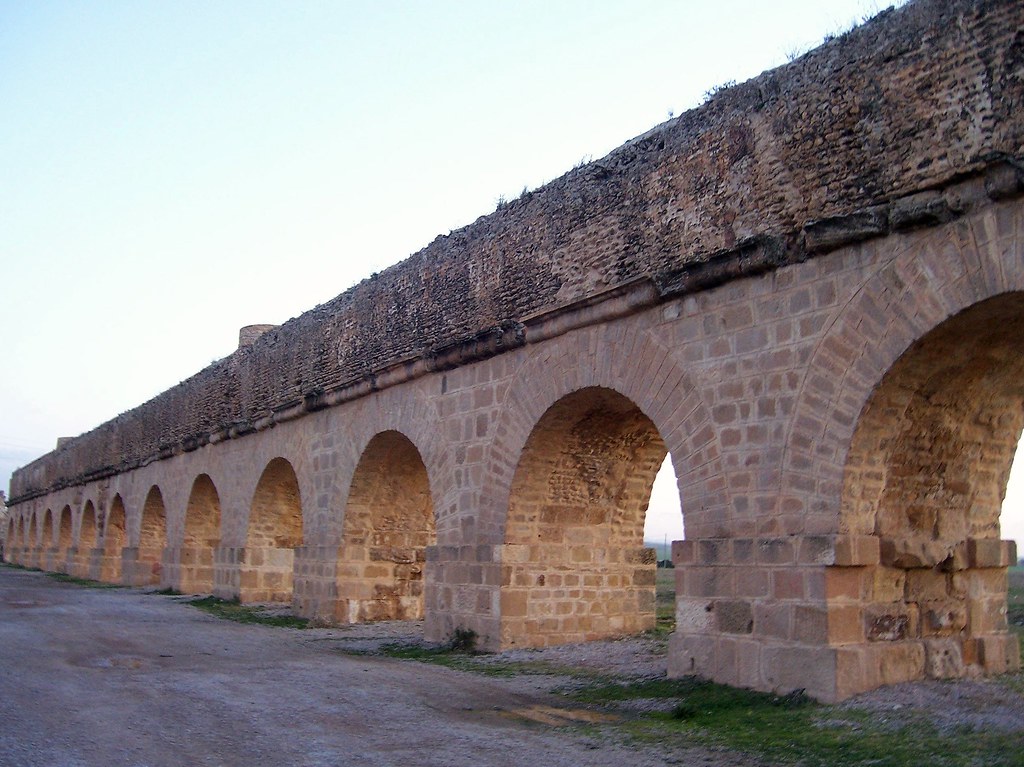
The Zaghouan Aqueduct, also known as the Aqueduct of Hadrian, was a Roman aqueduct that supplied water to the ancient city of Carthage, the ruins of which can still be seen in Tunisia today. It was constructed in the 2nd century BC, under Emperor Hadrian, to bring water more than 80 miles from Zaghouan to Carthage.
The aqueduct was partially restored in the 19th century but today lies mostly in ruins. Some of the best remains can be found about 3km south of the village of Mohammedia.
8. Segovia Aqueduct, Spain
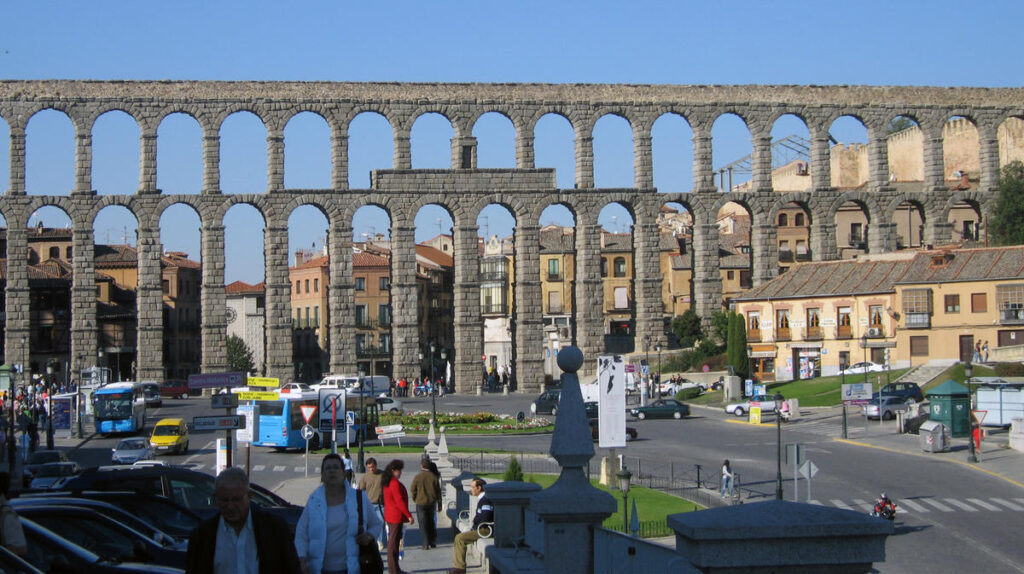
Segovia Aqueduct in Spain is an amazingly preserved Roman structure representing a brilliant feat of engineering. Without a legible inscription, the date of its construction is uncertain. However, the general gate is likely during the reigns of Emperors Domitian, Nerva and Trajan in the late 1st and early 2nd century AD.
Despite suffering damage under the Moorish occupation, the Segovia Aqueduct still stands tall and includes 2 levels of granite arches to a total length of 800 metres. The stunning site now weaves through Segovia, looming over the urban sprawl at a maximum height of almost 30 metres. Segovia Aqueduct is also part of the UNESCO World Heritage site of the Old Town of Segovia and its Aqueduct.
Source – History Hit

